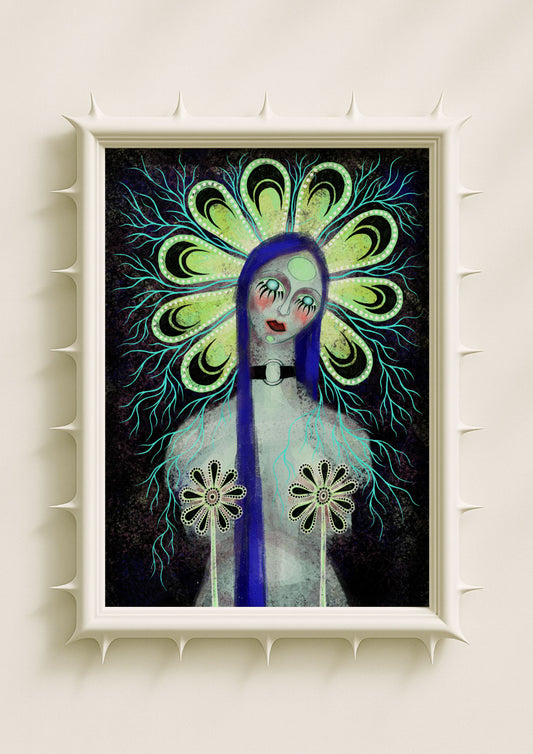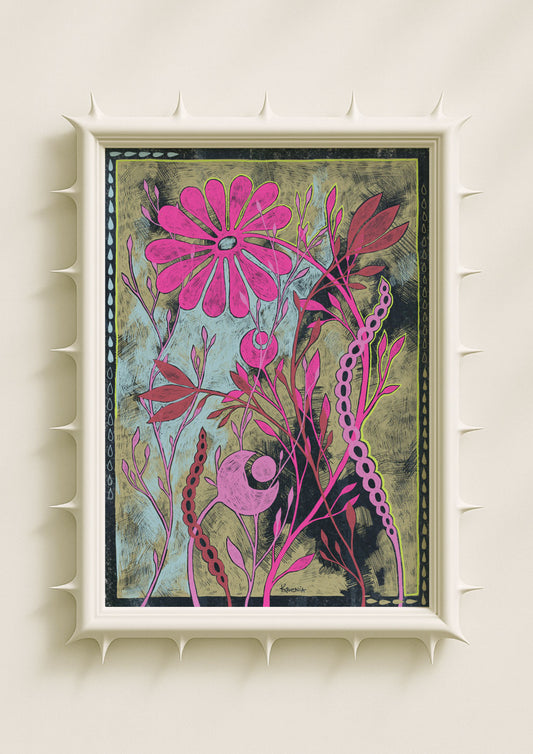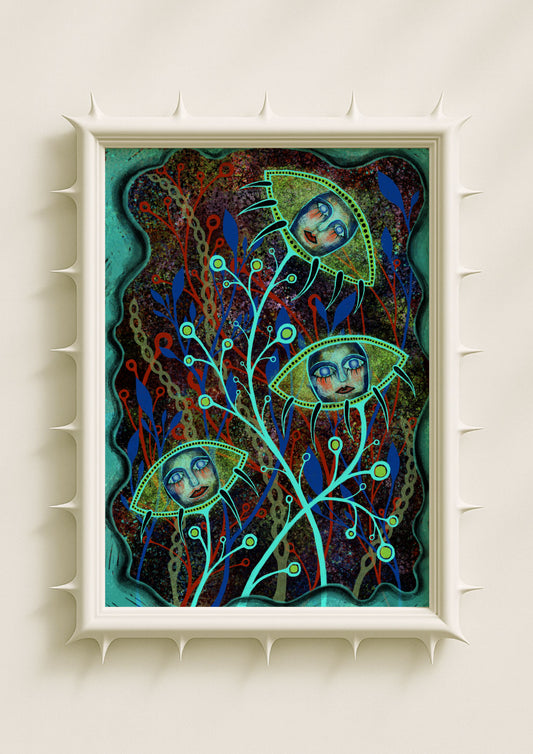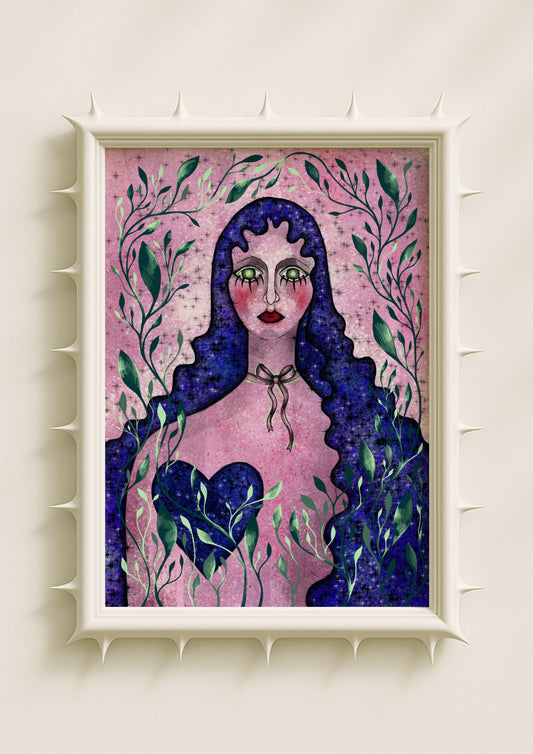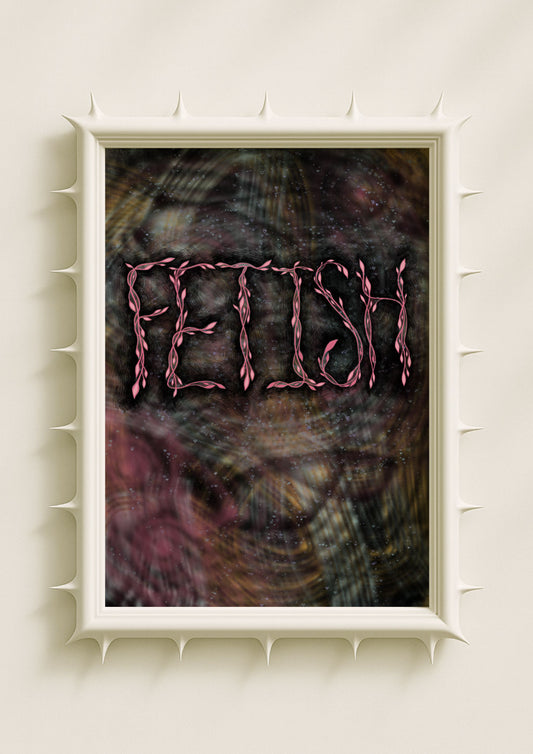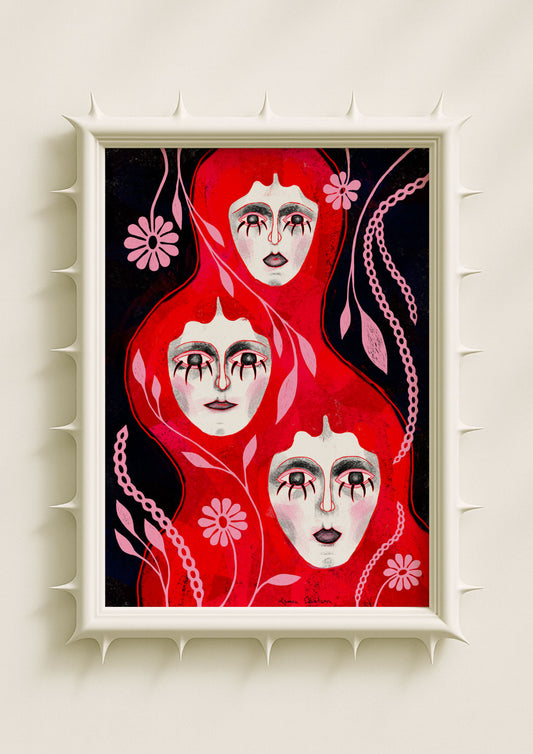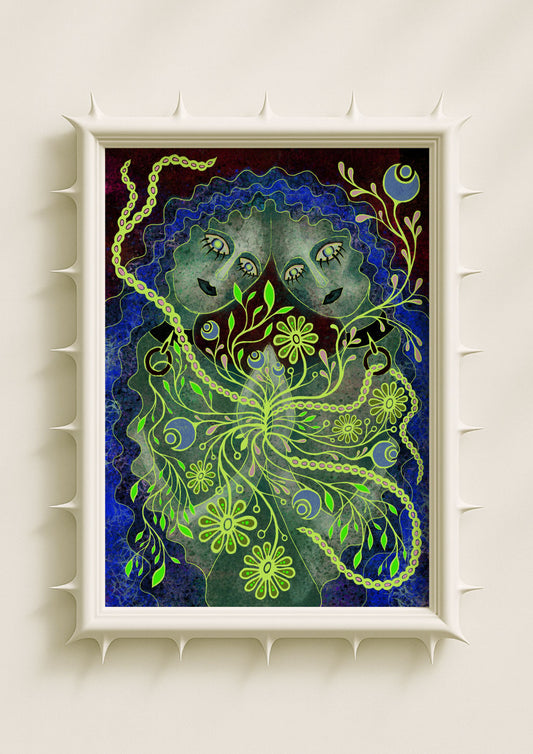Raw art has a way of dissolving the distance between the viewer and the artwork. It doesn’t hide behind polished surfaces or perfectly measured lines. It arrives with visible tension — textures that reveal the movement of the hand, colours that feel instinctive, shapes that stay slightly unrefined. In modern homes, where clean architecture and calm interiors often dominate, raw art prints bring something essential: the reminder that emotion and humanity still shape the spaces we live in.
When I think about raw art, I think about the marks that remain on the surface long after the moment of creation. A trembling outline. A fast stroke. A patch of colour that looks like it was placed there in a hurry. These details feel alive. They bring vulnerability and warmth into rooms that might otherwise feel too controlled. Raw art doesn’t try to impress; it tries to speak.
Imperfection as Depth
In a world that celebrates neatness, raw art turns in the opposite direction. Imperfection becomes an aesthetic — not as a rebellion, but as truth. A raw art print shows exactly what it is. The viewer sees the gesture, the hesitation, the intensity. There is no mask. And in contemporary décor, this honesty adds a layer of depth that minimalism alone can’t provide.

Many modern homes are built around smooth textures: glass, polished metal, clean white walls. A raw artwork interrupts that smoothness with intention. It creates a point of friction, a place where the eye can rest and feel something textured, personal and real. Imperfect marks bring emotional weight, as if the artwork were still in motion.
In my own pieces, I often leave contours visible, shadows unfinished, colours slightly uneven. These choices make the artwork feel like a moment — something captured mid-breath rather than locked into perfection.
The Honesty of Visible Process
Raw art carries the story of its making. You can trace the pressure of a brush, the shift in direction, the impulse behind a gesture. In prints inspired by raw aesthetics, these marks are preserved instead of polished away. They become a kind of emotional transparency.
When I work this way, I don’t aim for flawless execution. I aim to keep the feeling alive. A line that looks rushed, a smudge left intentionally, a shape that leans off-balance — these details reflect the way emotions move: not neatly, but with intensity, hesitation and sincerity.
In modern interiors, this honesty softens the atmosphere. It reminds the room that beauty isn’t always clean and symmetrical. It can be rough, expressive, unfinished — and still deeply moving.
Raw Texture in Contemporary Décor
Texture is the soul of raw art prints. Even in digital reproductions, the texture of charcoal, graphite, thick paint or scraped pigment becomes part of the room’s emotional language. It counterbalances sleek surfaces and introduces a tactile presence without needing to touch the artwork physically.

Raw textures work beautifully in a variety of interiors. In minimalist homes, they add warmth. In bohemian spaces, they echo the layered, collected atmosphere. In modern apartments, they bring a sense of human presence that breaks the anonymity of clean lines. Raw art pairs especially well with natural materials — wood, linen, stone — but it also creates striking contrast against metal, glass and concrete.
A room changes when texture enters. It becomes more grounded.
Emotional Honesty as Atmosphere
People are drawn to raw art because it mirrors real emotional experience. There is nothing idealised about it. It captures contradiction — softness and sharpness, quiet and tension, stillness and movement. A raw art print is a reminder that emotion does not follow perfect lines.
When placed in a home, these works bring atmosphere more than decoration. A raw portrait can set a reflective tone in a bedroom. A rough botanical form can make a neutral living room feel more soulful. A piece filled with expressive lines can energise a workspace. Instead of merely filling a wall, raw art shapes the emotional temperature of the room.
I often think of these artworks as companions rather than objects. They don’t blend into the background. They stand with you.
The Human Touch in a Digital World
Modern life is increasingly digital, and homes often absorb that sleekness. Raw art reintroduces the human hand. It slows the room down. It reminds us of imperfection as beauty — a kind of presence that screens and smooth surfaces can’t replace.

The human touch in a raw print is subtle but powerful. You can sense the breathing rhythm behind the strokes, the spontaneity behind the marks. It gives the artwork a pulse. And that pulse interacts with the space around it, creating a balanced contrast between digital clarity and organic emotion.
This is why raw art prints feel so modern. They are not nostalgic; they are grounding. They bring us back to the texture of being human.
Why Raw Aesthetics Belong in Contemporary Homes
Raw art is not unfinished. It is unfiltered. It invites you to experience something direct, honest and present. In contemporary homes, that quality becomes a kind of emotional anchor — a reminder that a space is not just for living, but for feeling.
When I create raw-inspired pieces, I think about how they will live in a room: how the light will soften the marks, how the shadows will deepen the texture, how the atmosphere will shift as the viewer returns to the same lines again and again. Raw art grows with the space. It becomes part of it.
In a world of clean surfaces and curated perfection, raw art prints offer something rare: depth, honesty and the unmistakable touch of a human hand.
